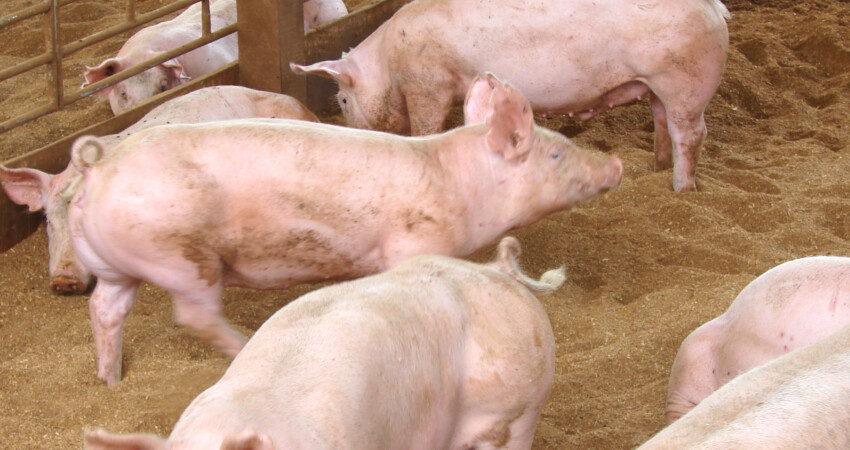

Uncomfortable boards for rest: Comfort is critical for pigs as they transition through weaning. Always provide newly weaned pigs a minimum of 0.5 square feet per pig of comfort space in the sleeping area.
A comfort board is recommended for pigs to lay on. A 4-foot by 8-foot comfort board can handle up to 64 pigs per pen. As numbers per pen increase, add more comfort board area. Additionally, adjust the brooder heaters to provide the desired temperature across the surface area of the mat or board.
Poor ventilation setup: Air flow is another essential piece of the wean-to-finish atmosphere.
A 1,200-head wean-to-finish barn needs 2 cubic feet of air per minute (CFM) per pig or 2,400 CFM to reach minimum ventilation for weaned pigs.
Many barns are set up by the contractor or the electrician to have 2-24 inch pit fans running at 40-50 percent for minimum ventilation. Most 24 inch fans provide 7,000 CFM. With 2 fans at 40 percent, we have 5,600 CFM or about 5 CFM per pig. That is an excellent set up if we have 50 pound feeder pigs, but results in excessive propane use for weaned pigs.
Manually turn off one of the 24 inch fans to achieve minimum requirements. Turn the fan back on when the pigs approach 40-50 pounds. If you have actuated inlets, you may need to reset the system for proper ventilation.
Ignorance on how to run systems: Computerized system and modern software can be helpful tools in young pig management, but must be used properly.
These usually run the ventilation systems of your barn. Help farm managers become familiar with their operations and their settings; they can be your best friend or, if managed improperly, or can be your worst nightmare. Teach all employees how to use the system so they can make necessary adjustments, if needed.
Changing Pigs diet too quickly: The transition onto solid feed is a farmer’s top priority at weaning. Because of its importance, be sure to carefully plan the ration, ensuring that each step is similar to the previous ration.
In an effort to hold down costs, I see too many producers moving pigs too quickly from a milk based diet to corn-soy. The young pig has been exposed only to a milk diet while on the sow. Its digestive enzymes are set to handle the proteins and carbohydrates found in milk.
Changing the diet too soon can result in reduced growth rates and poorer conversions. These animals need to undergo a transition that allows them to develop their enzymes for digestion of cereal grains and soybean meal.
By experience, pigs must weigh a minimum of 25-30 pounds for this transition period to be complete. If you see healthy pigs with lower than target average daily gain (ADG) and higher feed efficiency, evaluate your transition strategy.
Feed outage: Almost every time a farmer makes a visit to the barns, there is a pen or barn out of feed. We all know the damage that can be caused by running pigs out of feed. Check the feeders every day.
If a feeding system is not working, determine the cause of the feed outage and work on a plan to fix it. After all, feed is the most important step in the weaning transition.
 Contact Jaguza Support
Contact Jaguza Support